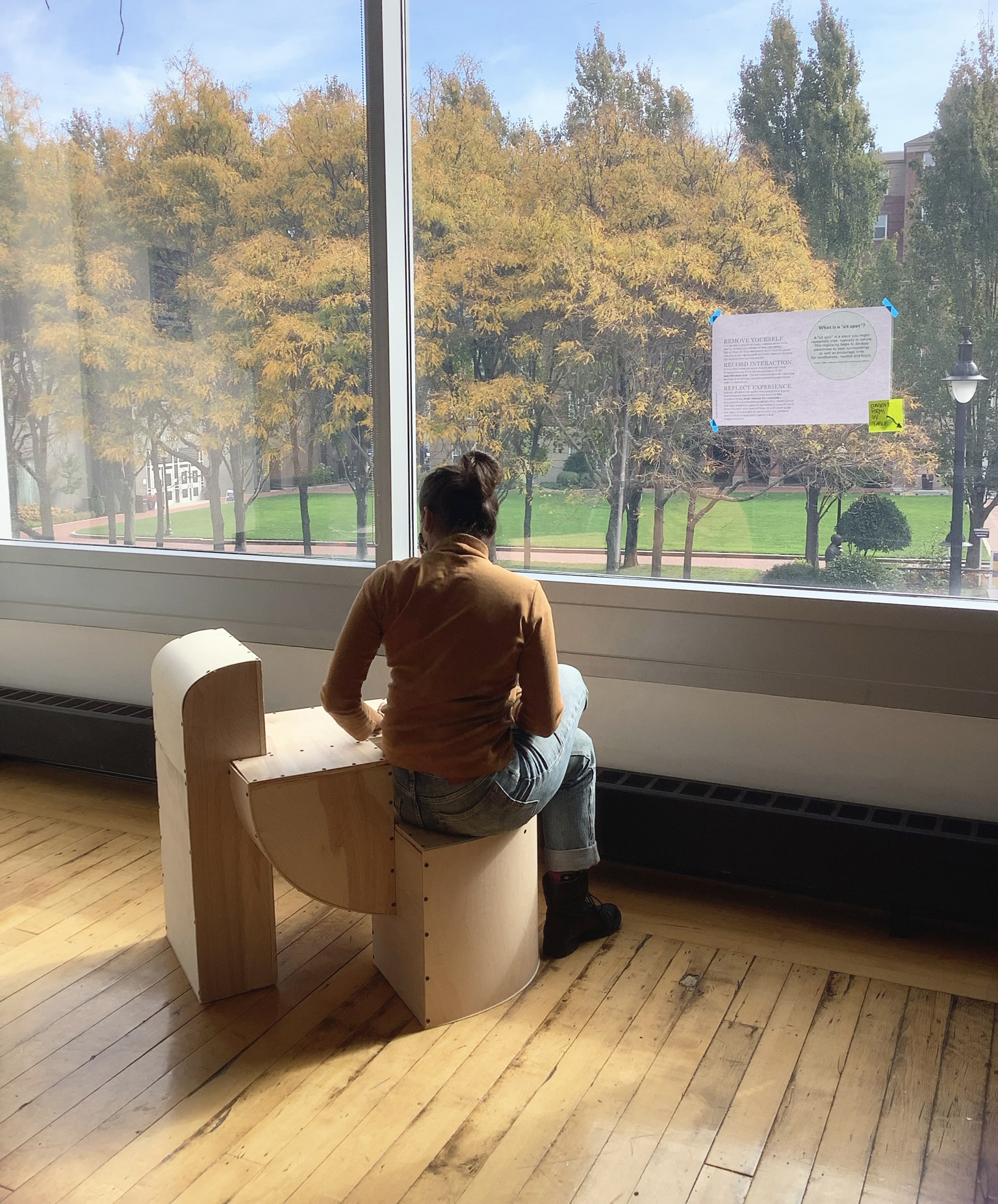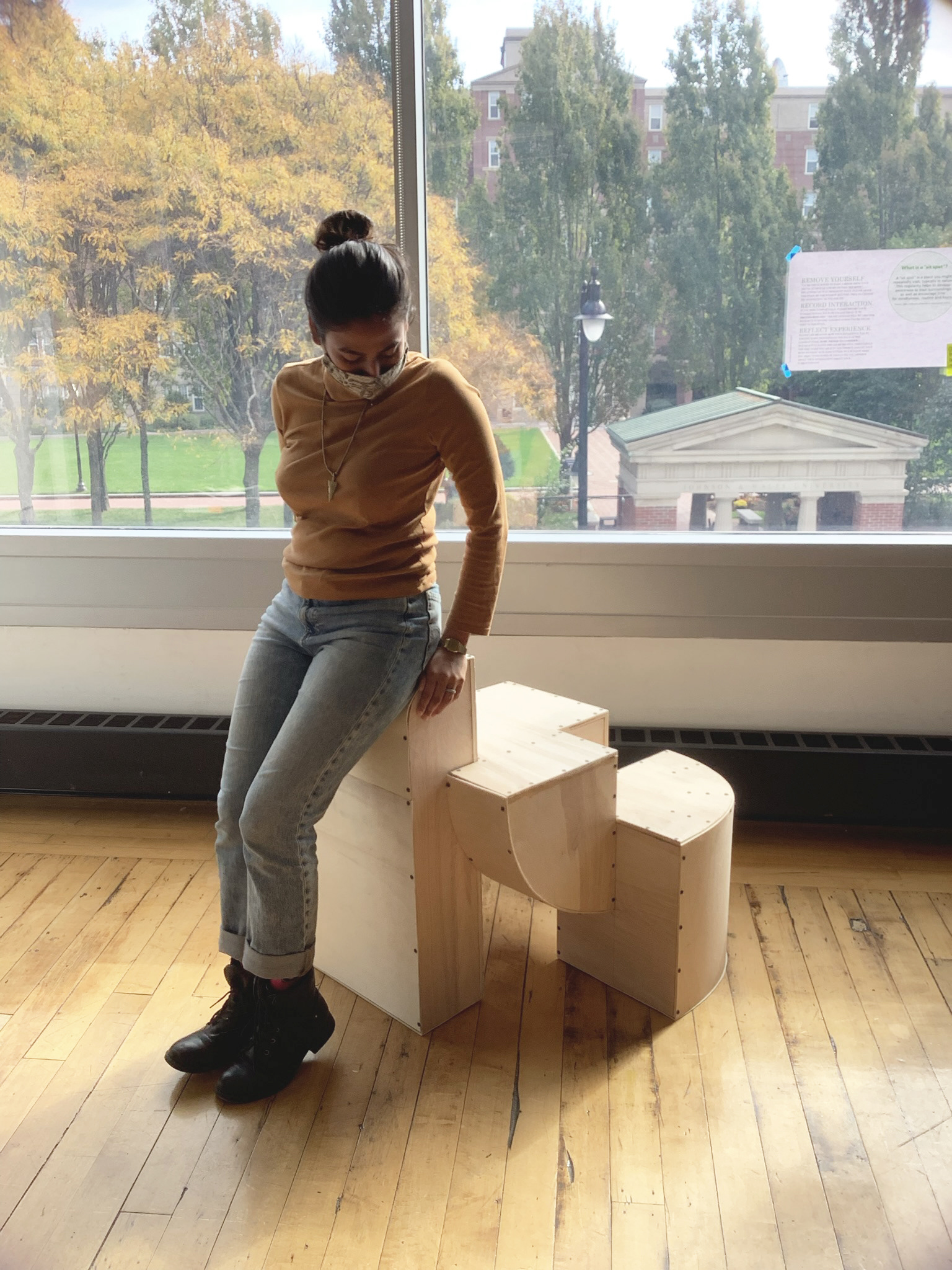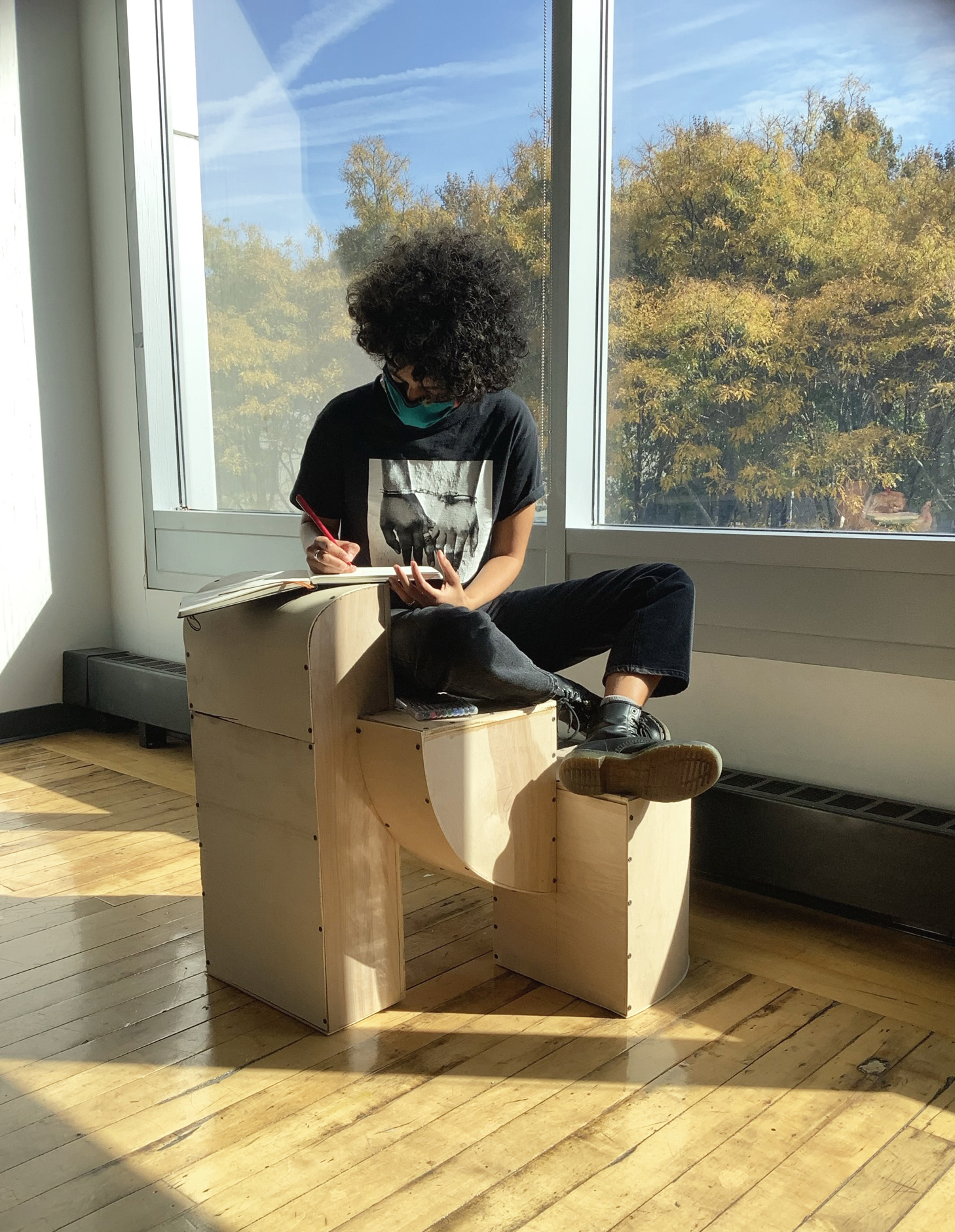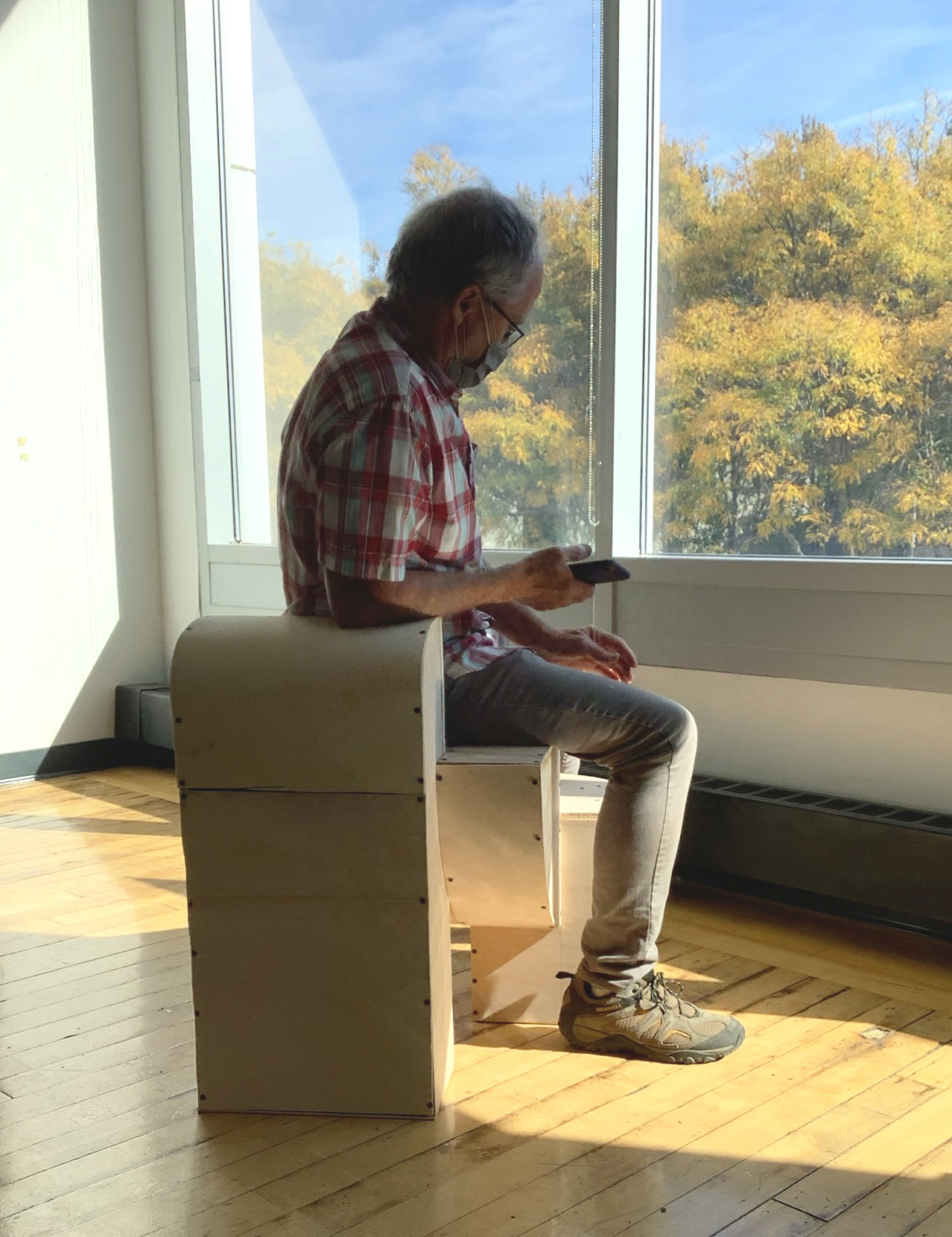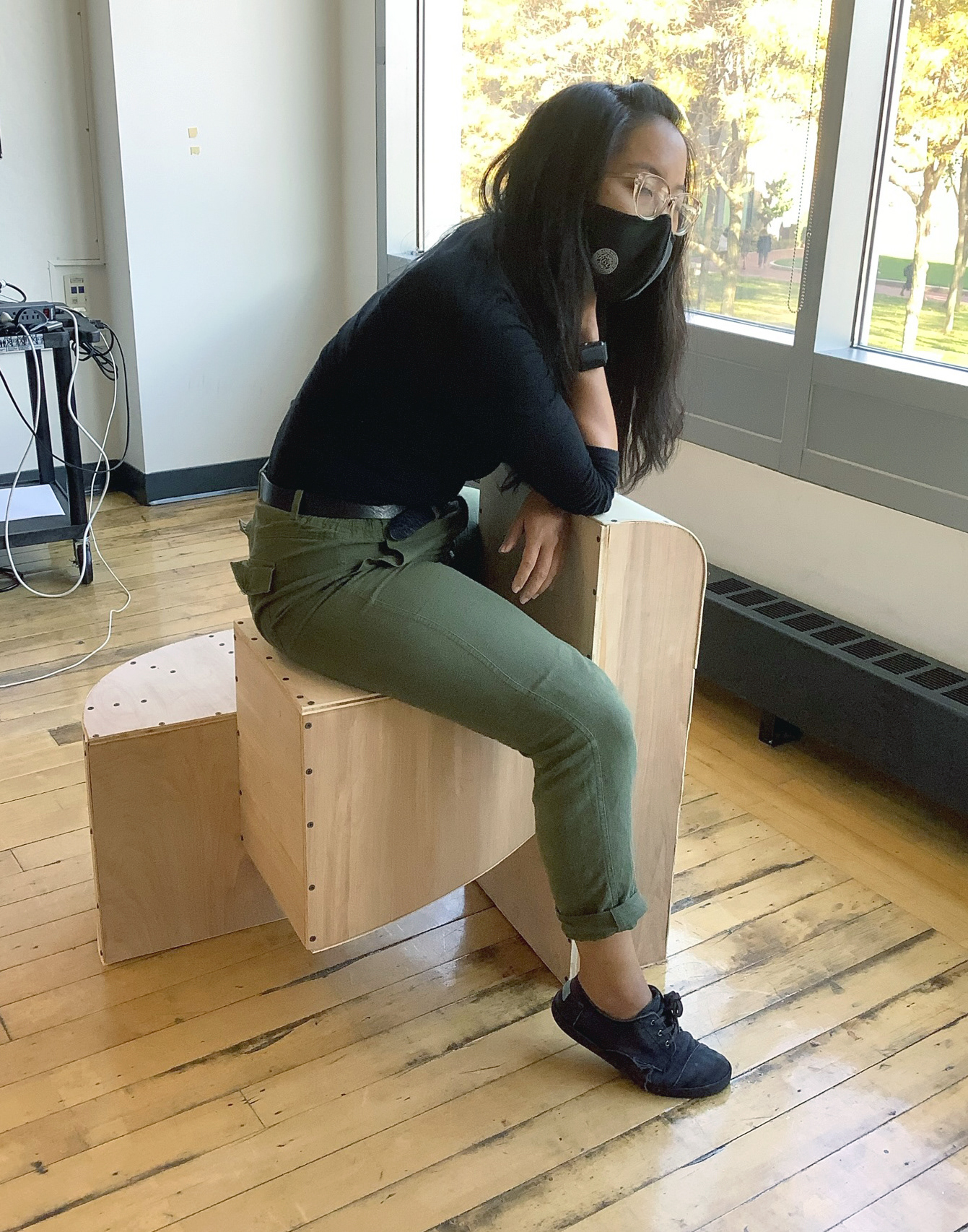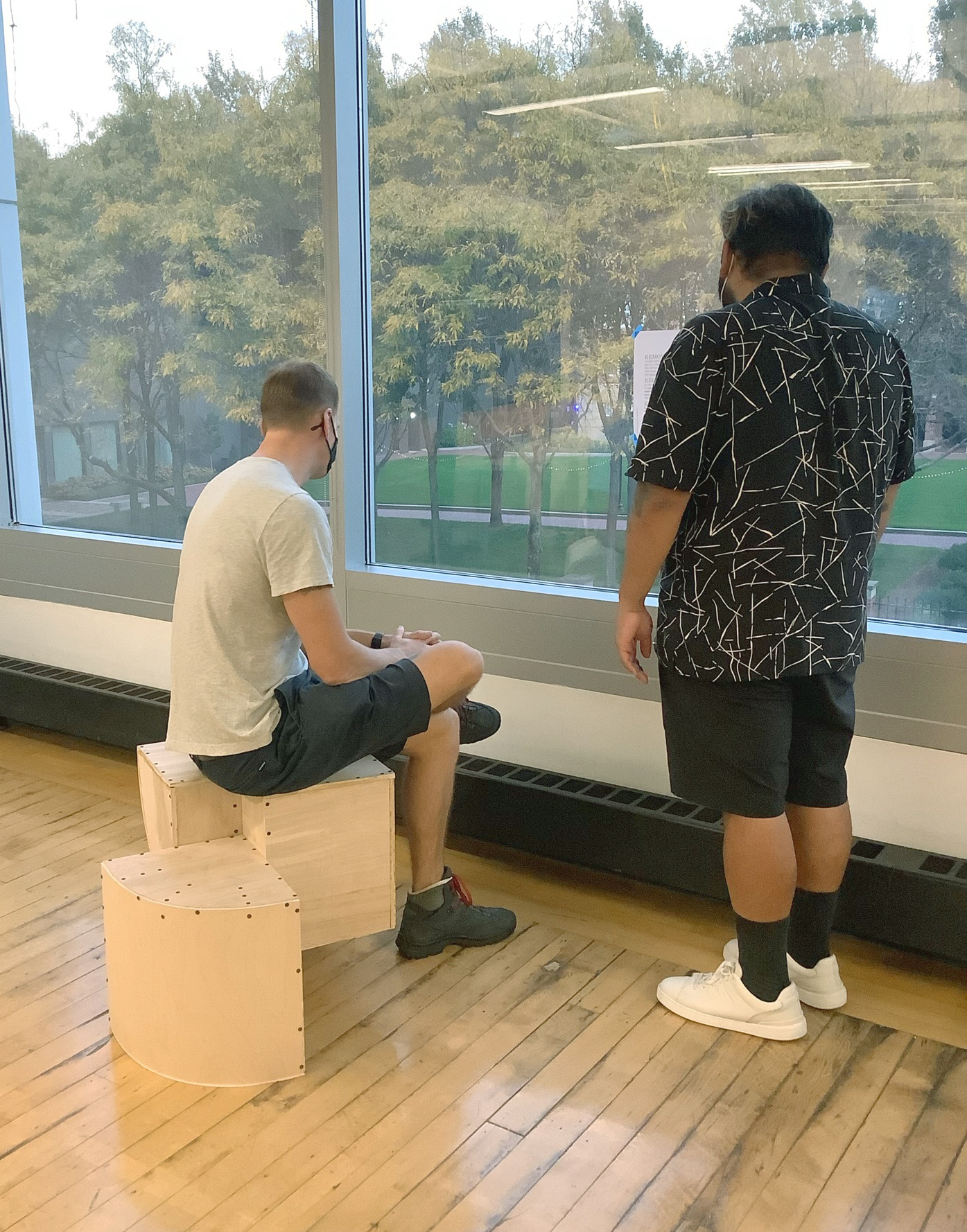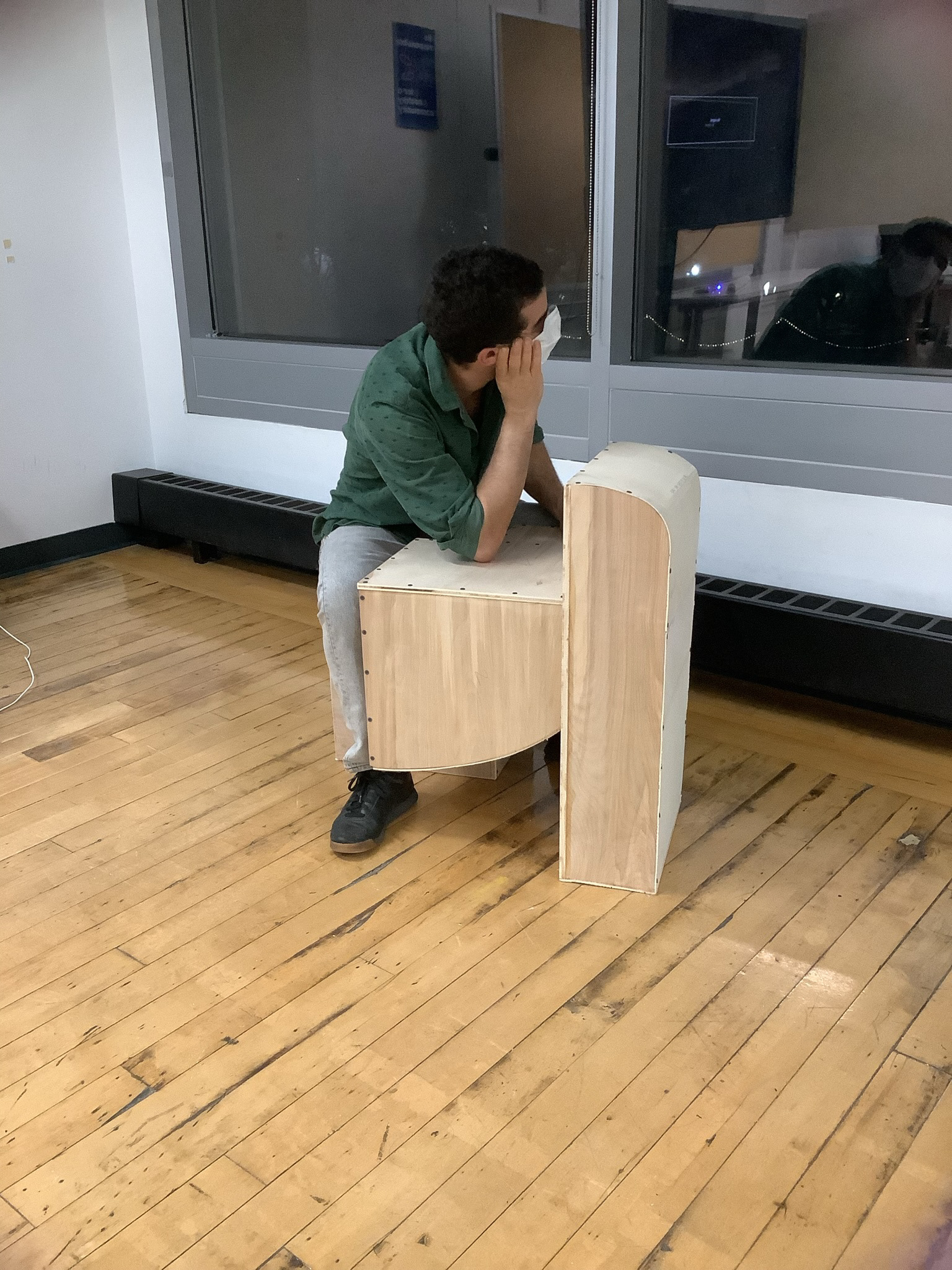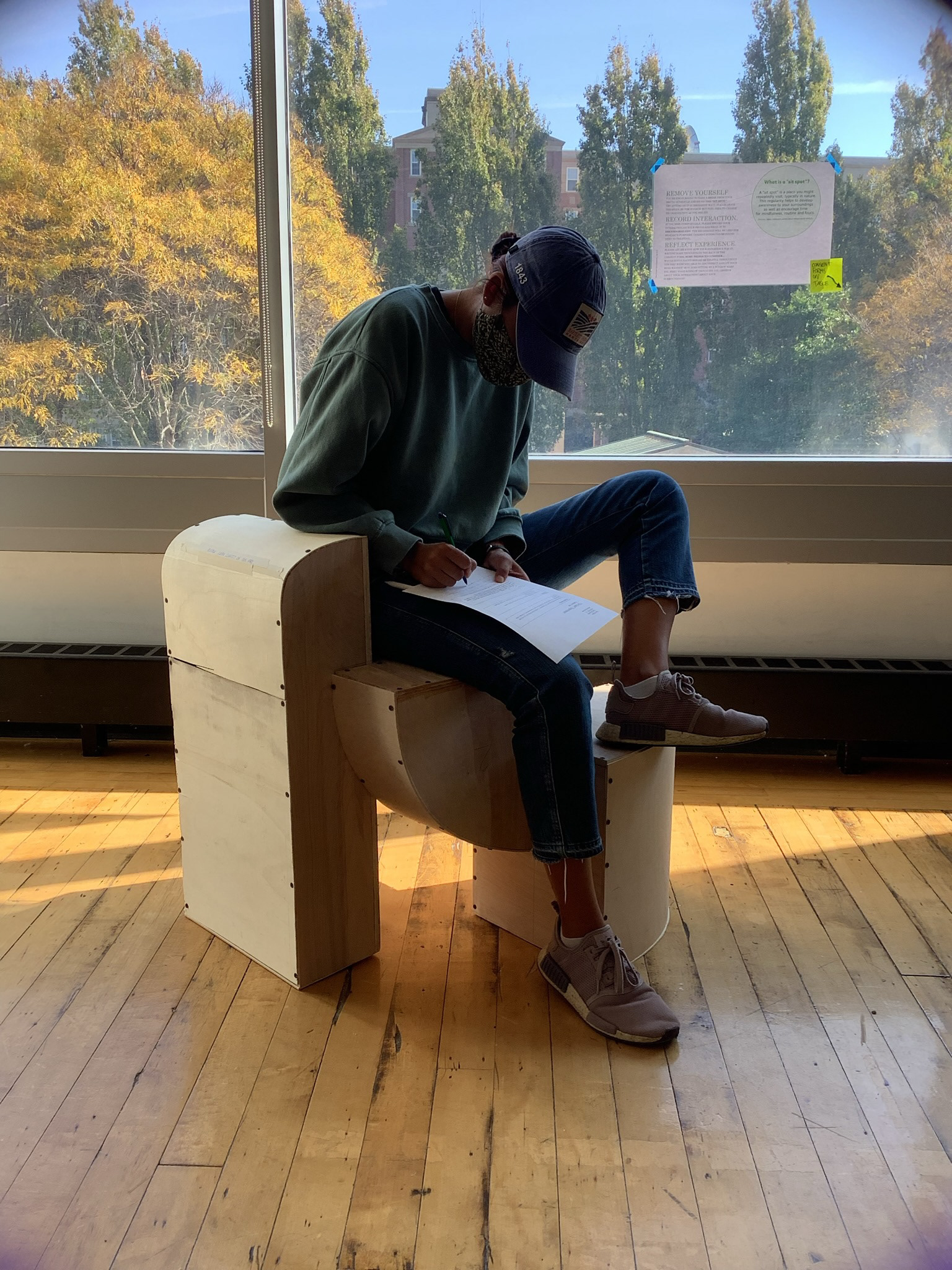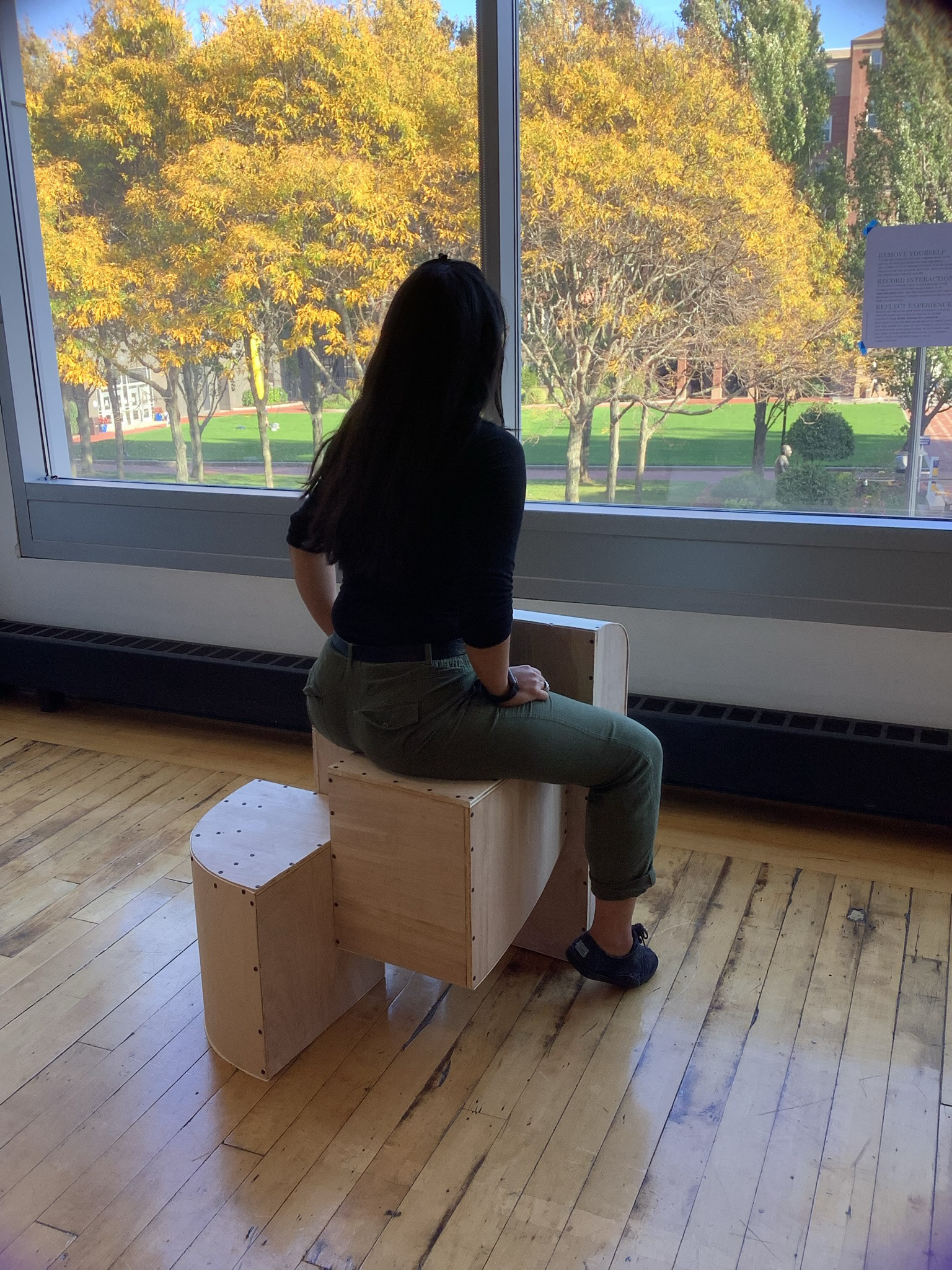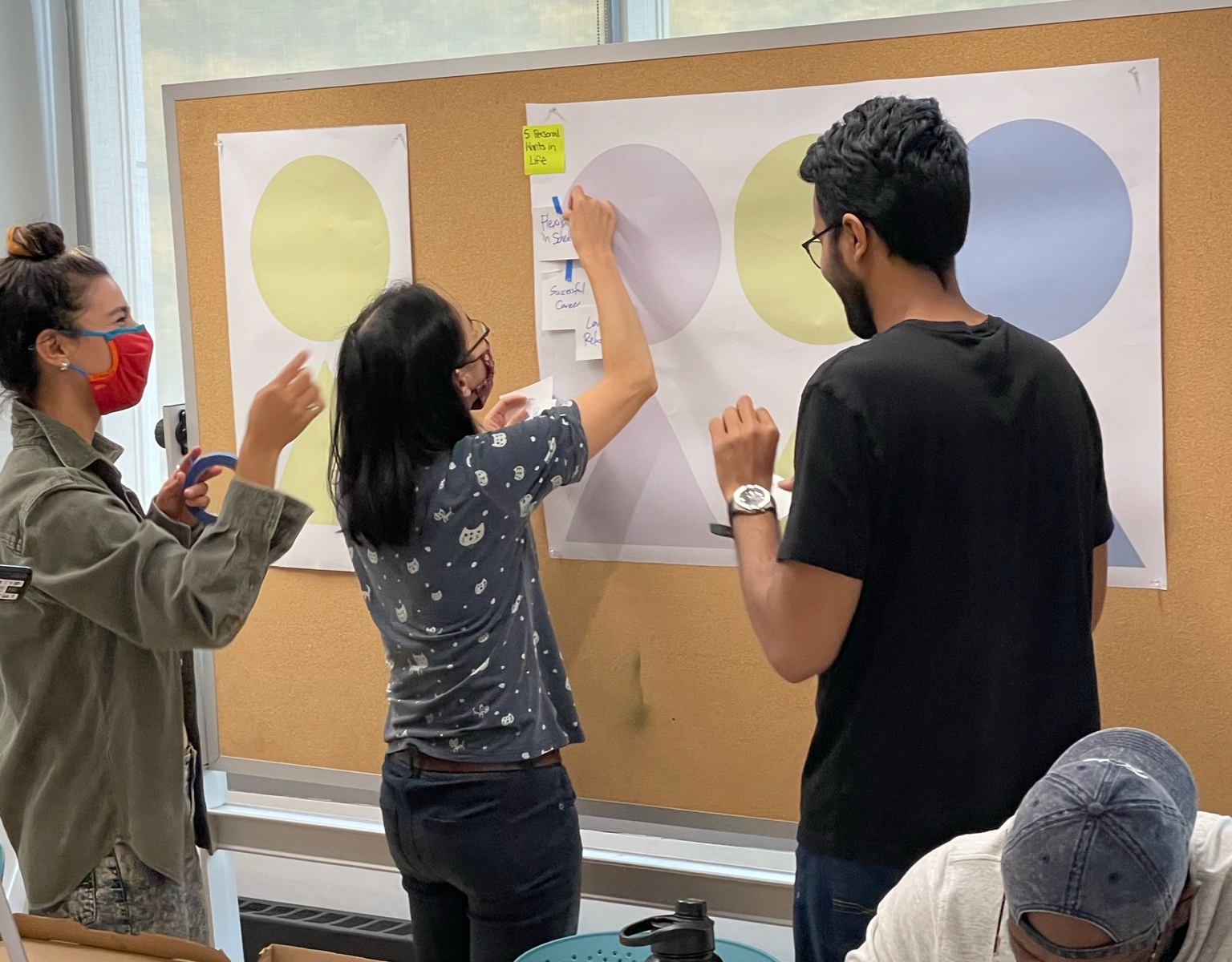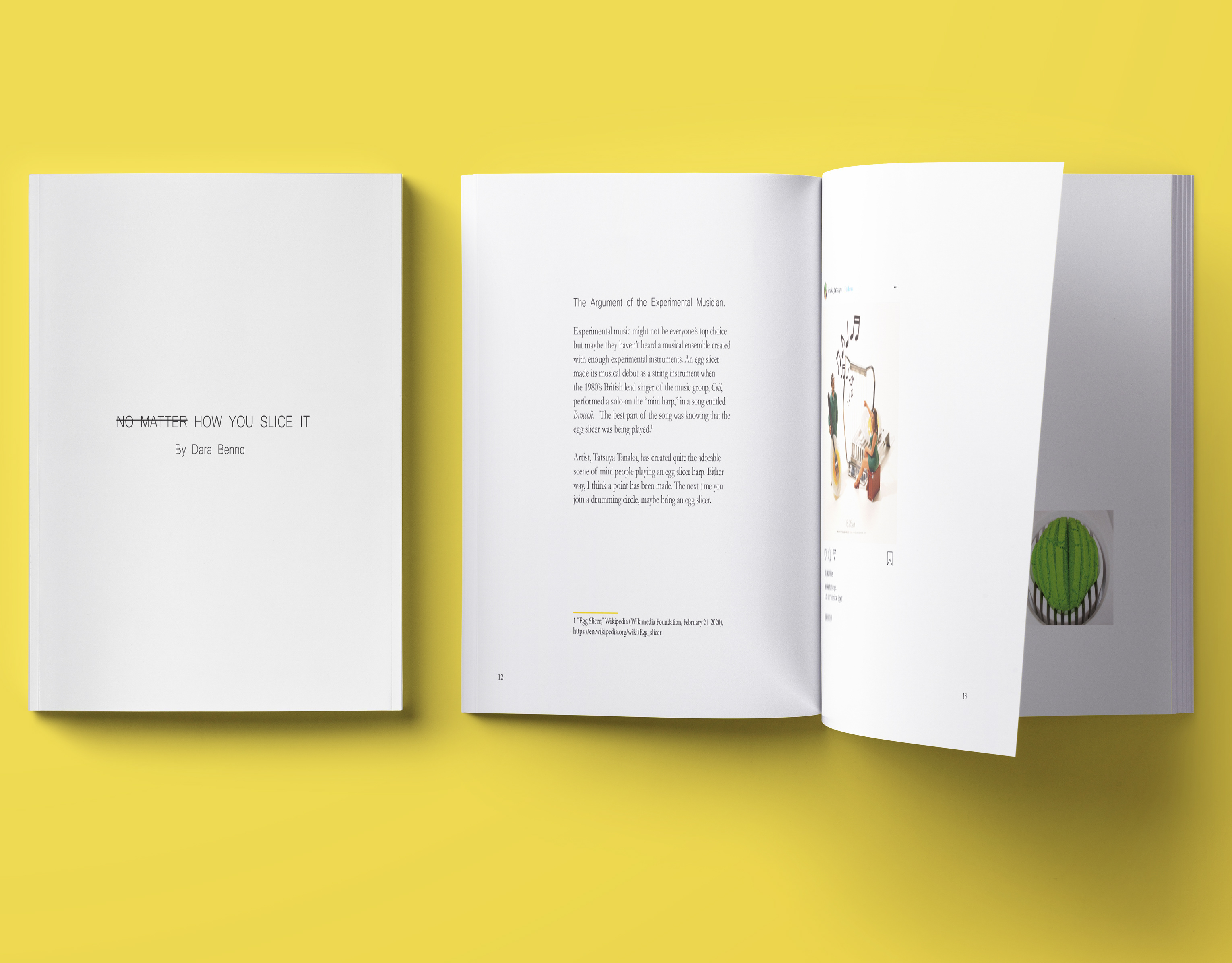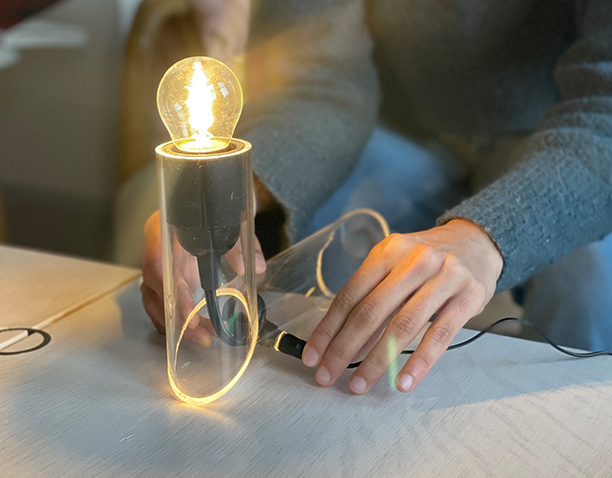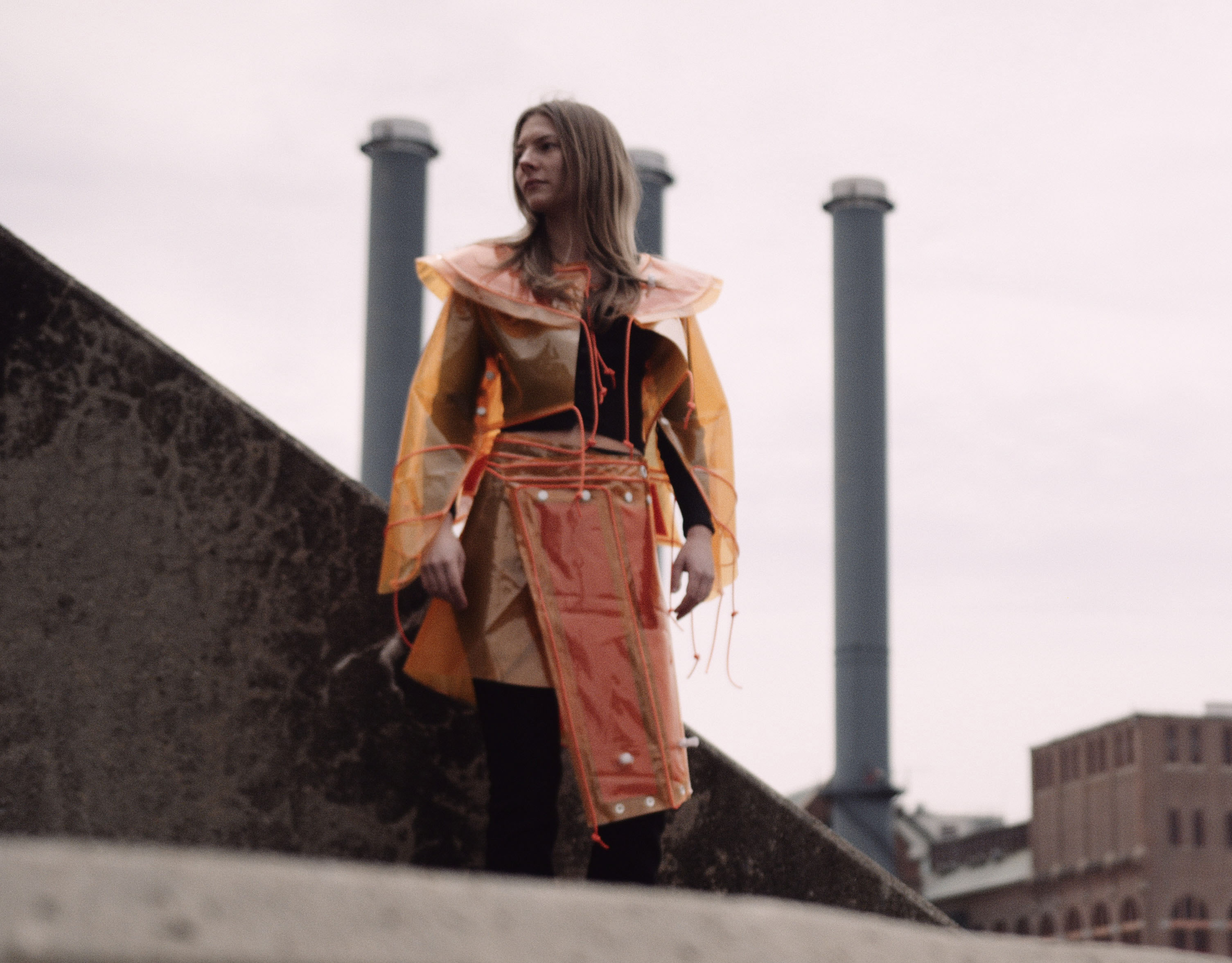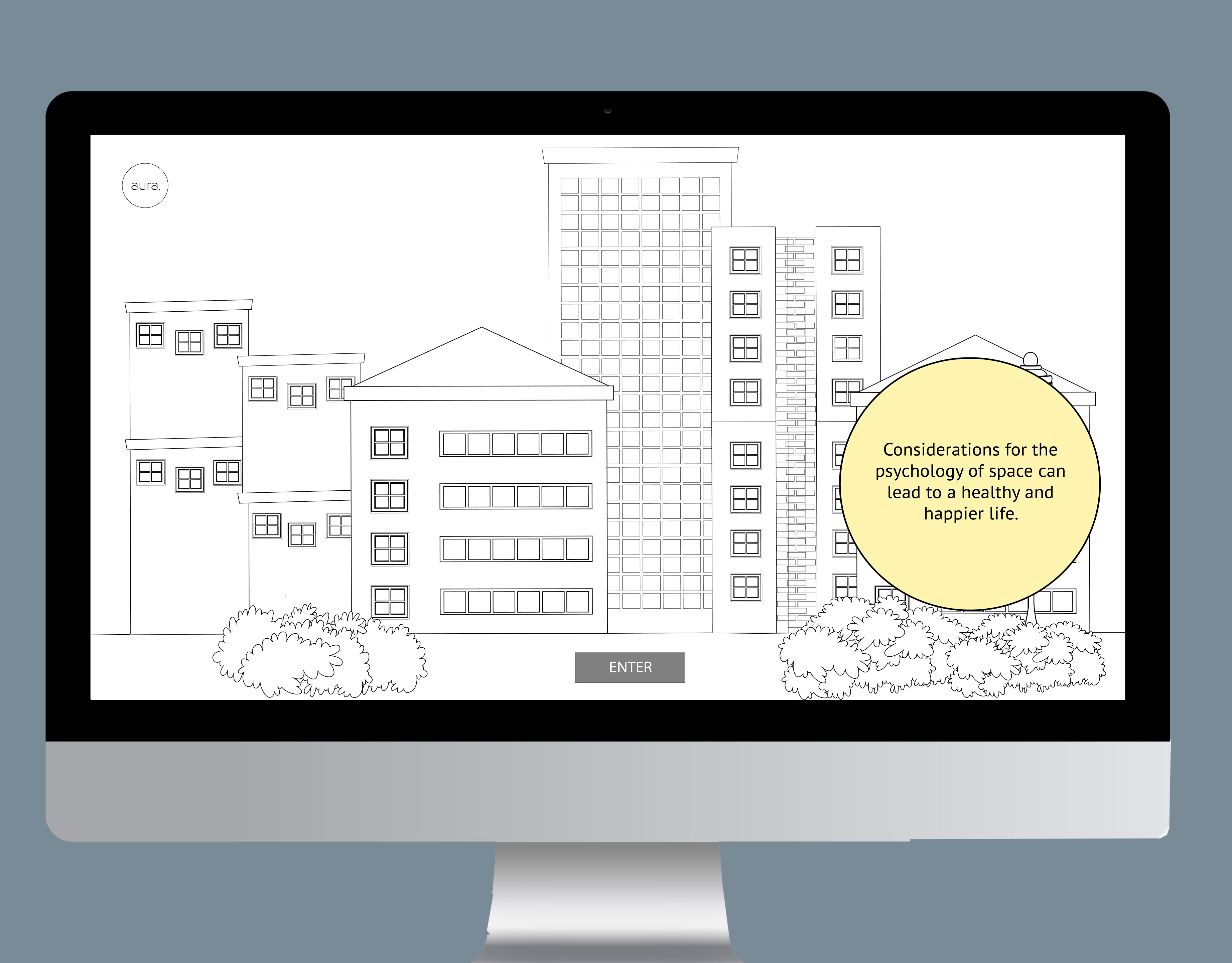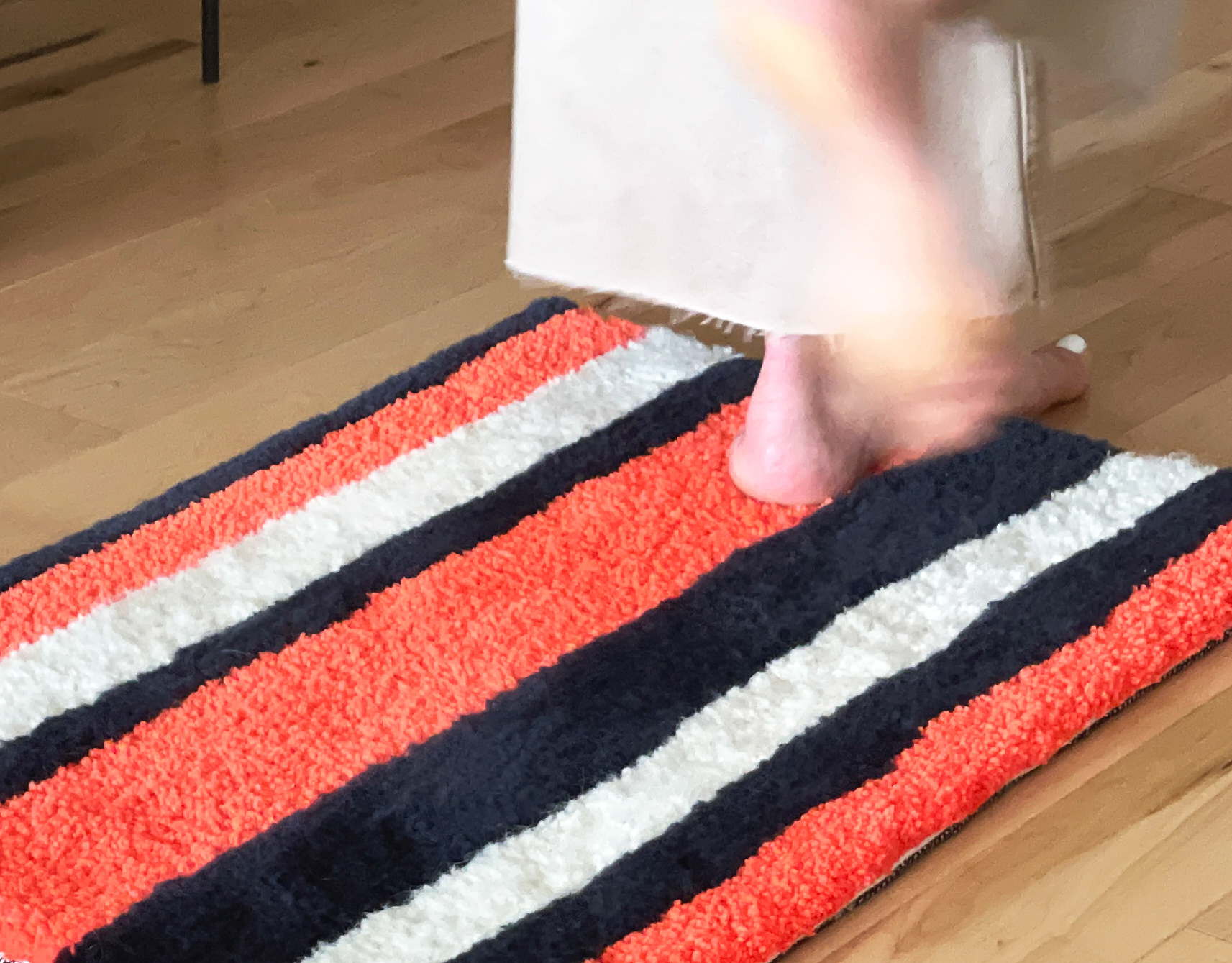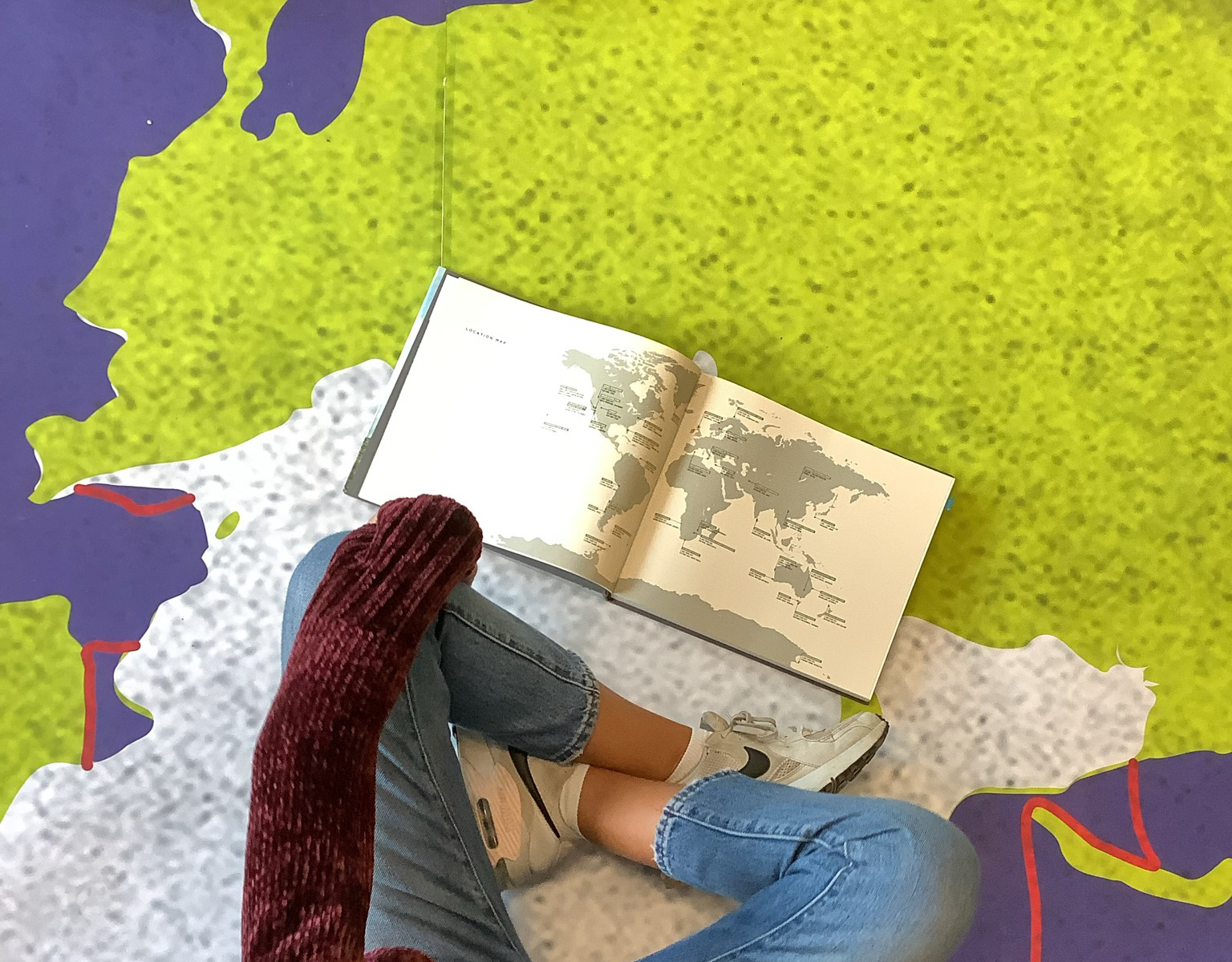**Featured in A Gathering: Gardens, Portals, Protests, an exhibition at Kniznick Gallery, part of Brandeis University's Women's Studies Research Center, and curated by Olivia Baldwin. Big thank you to ART SPIEL, Adria Arch, and Cate McQuaid for the beautiful write-ups of the show! **
Left: Exhibition flyer and included artists; Right: Exhibition description

Photography by Elizabeth Ellenwood
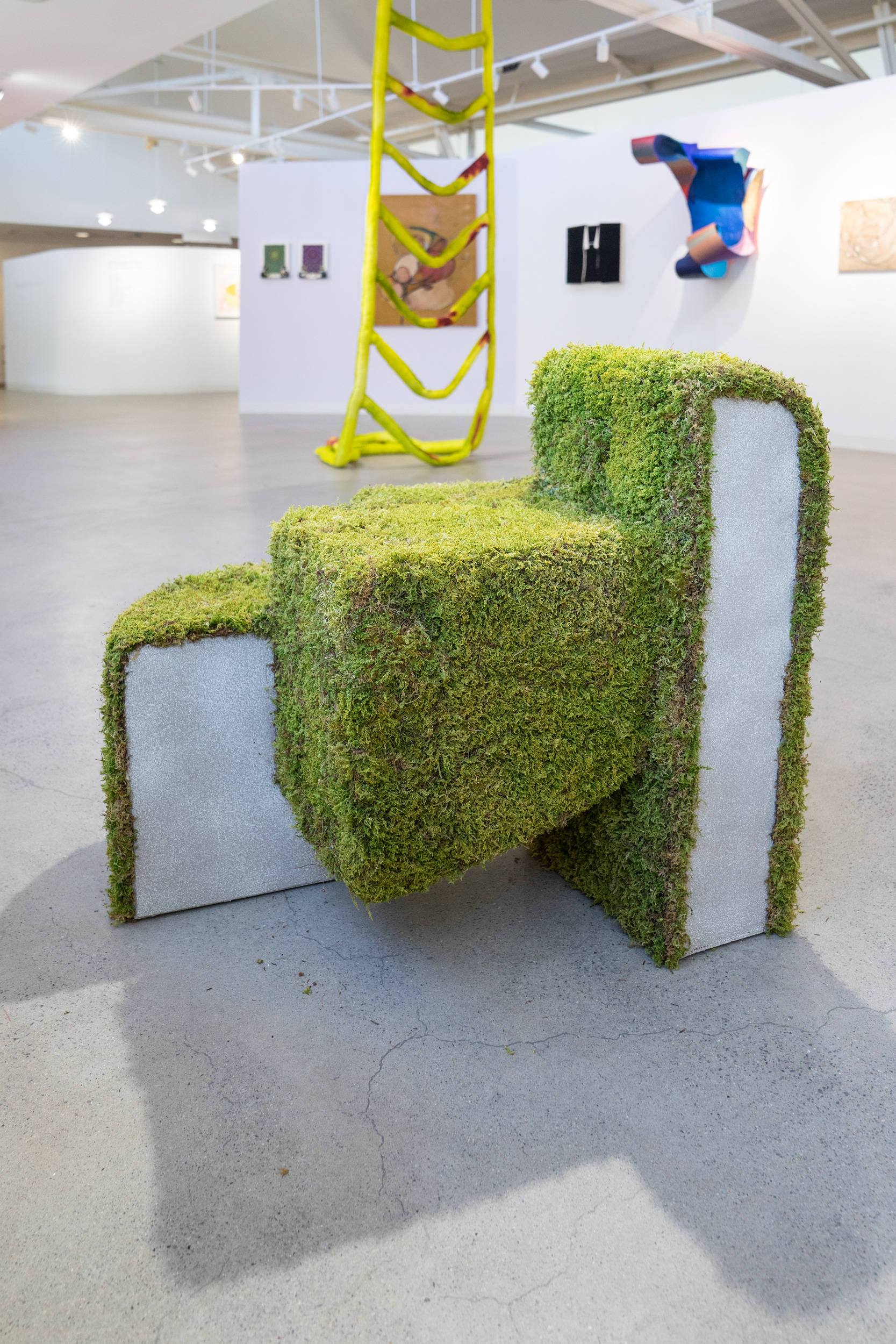
Photography by Elizabeth Ellenwood

Photography by Elizabeth Ellenwood
A living, moss-covered iteration!
How can we use reminders to disrupt the system of our lives and focus on the world around us?
Sit Spot prototype made from birch plywood.
The Sit Spot is a multi-tiered seat that invites one to take a break from their busy day and sit, lean or perch. With three seating levels, the design considers average seat heights from under the thigh to the floor and under the elbow to the floor, as well as the varying angles the legs take when seated at different levels. This variation encourages different interactions and ways of sitting depending on what feels good for the body at any given time throughout the day. Intentionally without cushions or added comfort elements, the seat is meant to push the user to shift positions regularly, utilizing object properties as a reminder for movement.
The idea of a “sit spot” itself is one that naturally occurs when people repeatedly return to the same place, usually in nature, bringing them a sense of comfort and encouraging focus, awareness, and mindfulness in that moment.
Instructions for participation.
Participant reading interaction instructions.
Challenge
While conducting a workshop evaluating basic needs and whether or not these needs are being threatened in today's society, participants expressed an extreme lack of time resulting in a lack of self care. Without time, people feel forced into routines that are determined by day-to-day obligations, feeling powerless in their own lives. Could a curated object interaction help facilitate a reminder to break unwanted routines of self neglect?
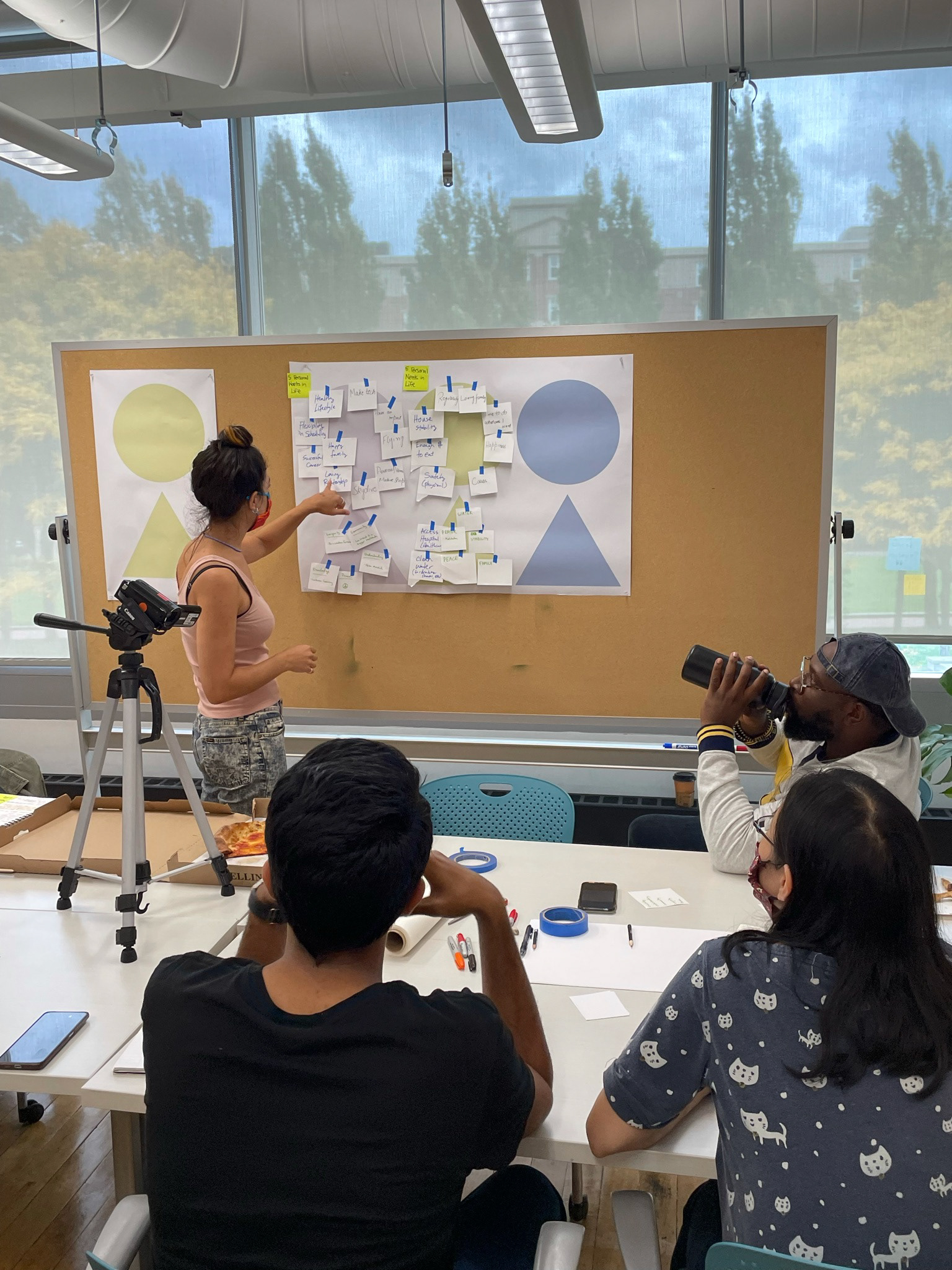
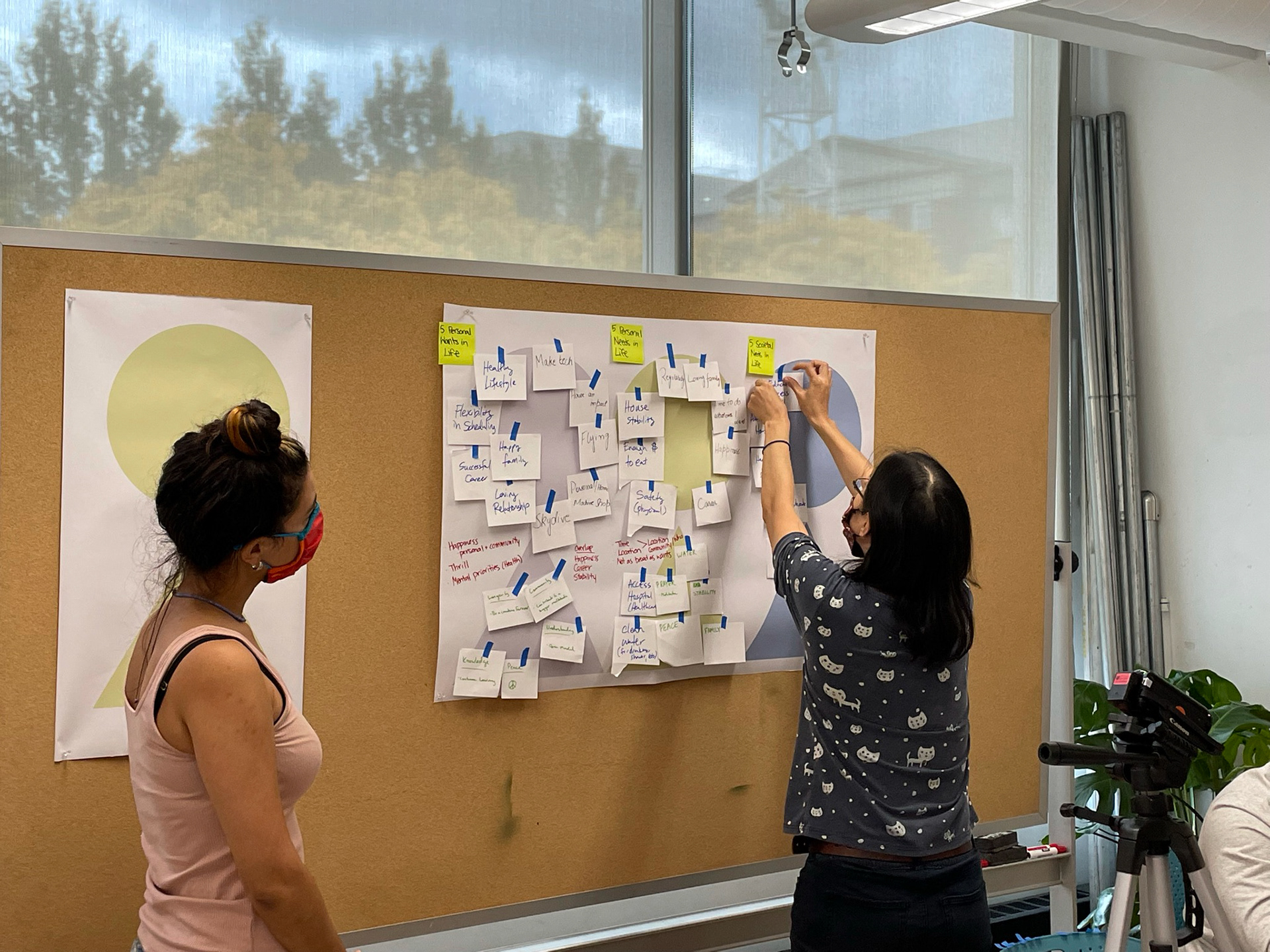
Workshop evaluating basic needs
Research + Insights
Research proxy asking people what symbiotic relationships they currently have with objects in their daily lives.
Thinking back to my observations on human/object relationships and behavioral outcomes, I took a deeper look into how we might develop symbiotic relationships with objects. I surveyed a group of 15 people, asking if they noticed any objects they live with that hold a particular significance or role in day-to-day interactions and found that many people, whether they realize it or not, rely on objects for feelings of closeness to distant loved ones (i.e. jewelry), to help with creating habits (i.e. placing keys in a particular container to prevent losing them) or to identify unmet needs (i.e. messy work surface taken over by various strewn belongings due to lack of time taken to put things away).
Opportunity
If objects have the ability to reintroduce agency into one's life through regular interactions and behavior association, what kind of object could help encourage routine breaks, time for a refocus on the self and overall mindfulness while easily integrating into day-to-day living?
Benchmarking objects and theories that identify and address unmet needs and habits.
Design Process + Outcome
Sit Spot design mood board.
Drawing inspiration from biophilic design principles and acknowledging the power of a regular connection with nature as a gateway to improved well-being, I wanted the design to both build off of natural interactions with nature as well as elicit a similar interaction that could be experienced from an interior space. Designing a piece of furniture that would be placed by a window and encourage consistent interaction would both facilitate this desired connection to the outdoors as well as encourage regular breaks that allow for self focus, routine and time for mindfulness.
With the goal of shifting positions on the seat, I looked to both standard measurements for varied sitting positions as well as tested seat levels with both adult males and females, creating a to-scale, cardboard model with the findings.
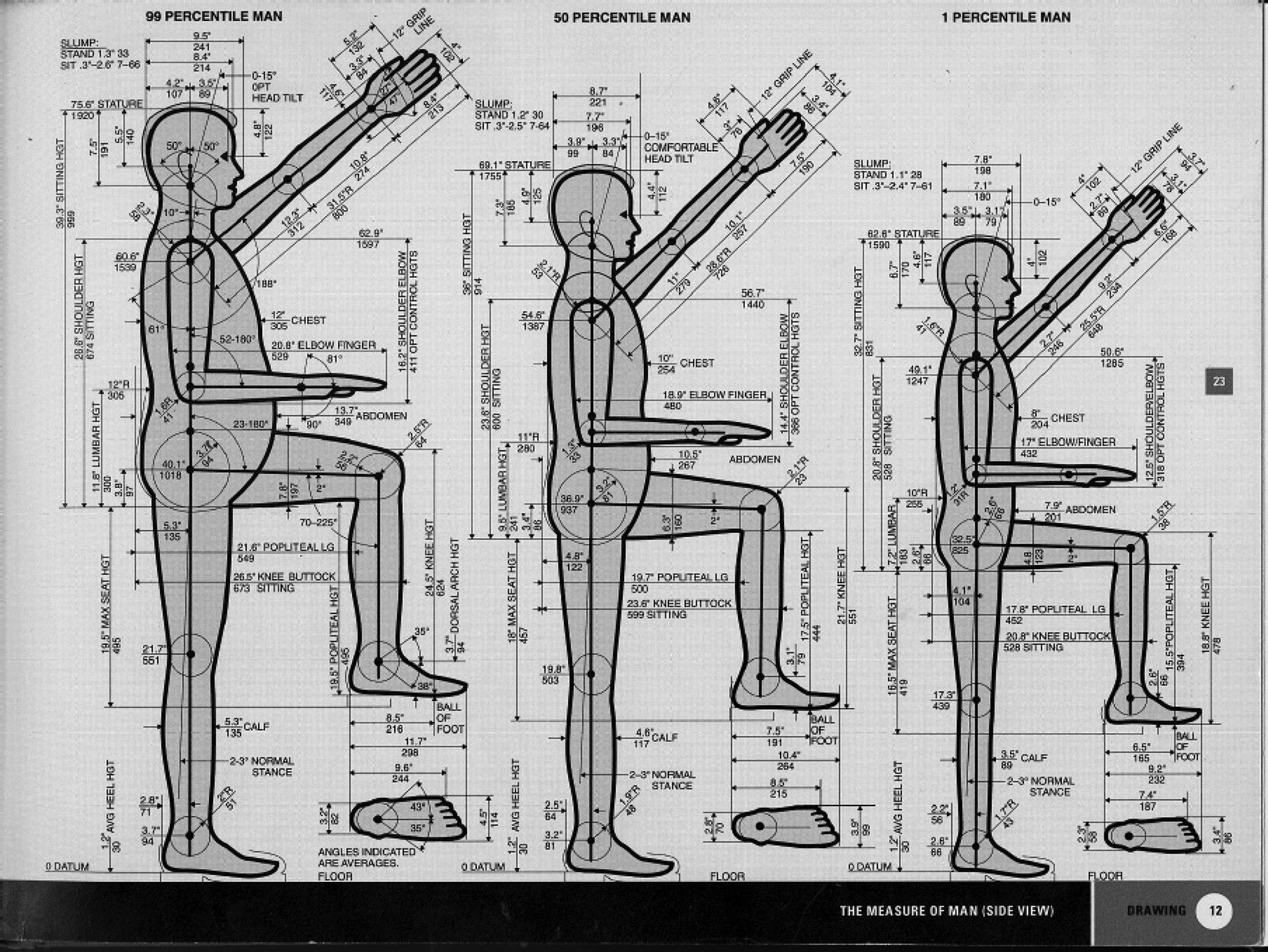
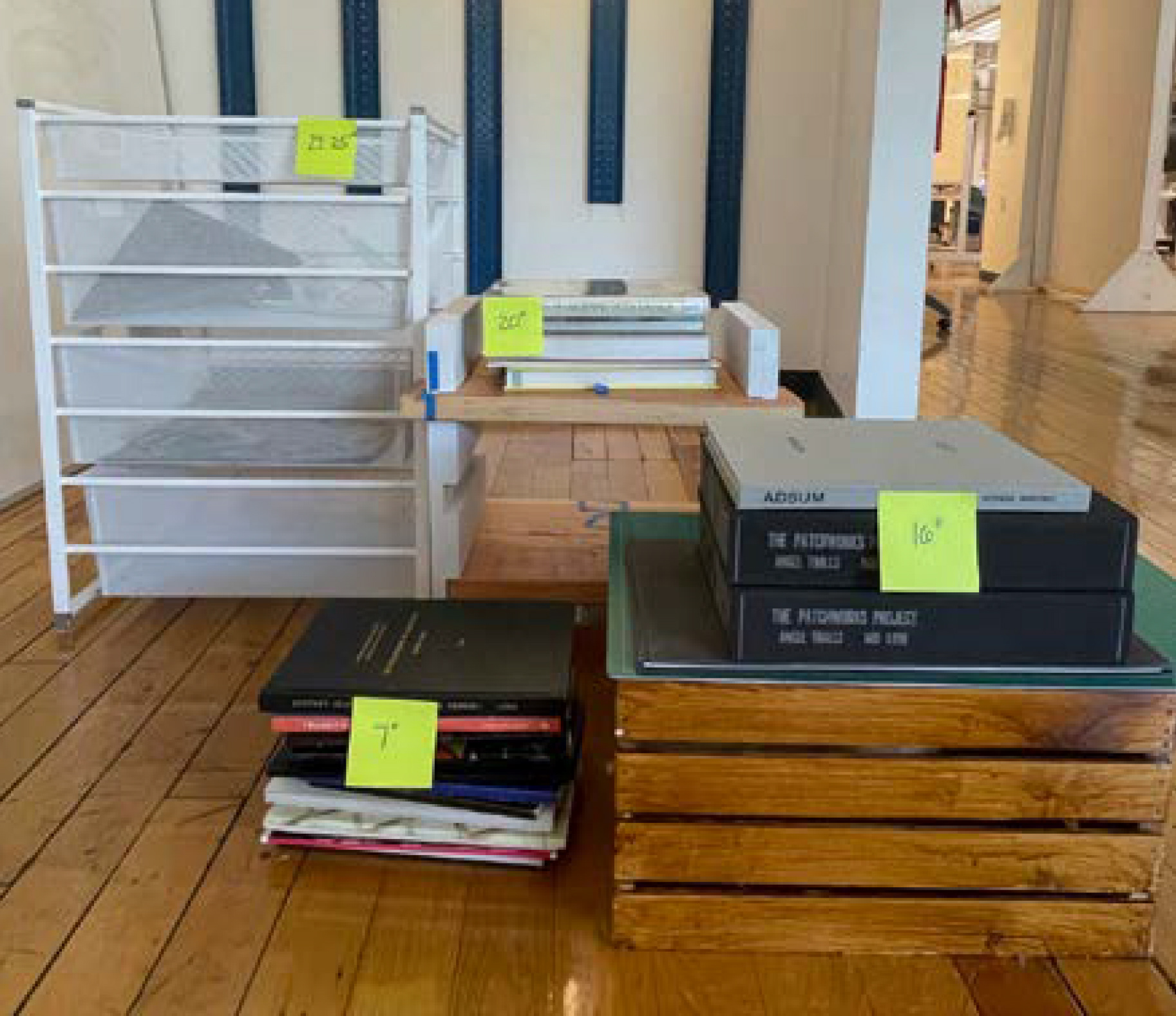
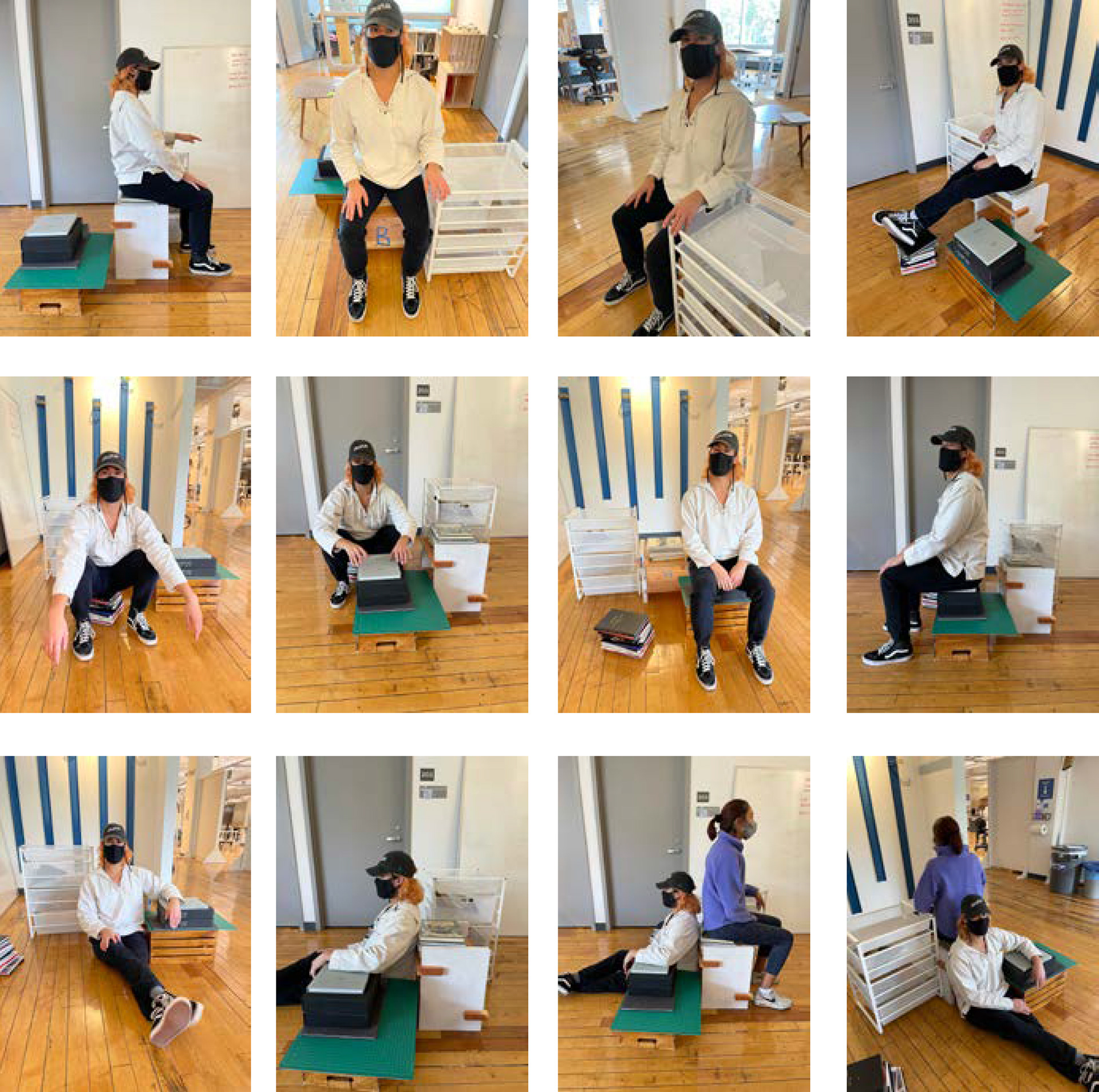
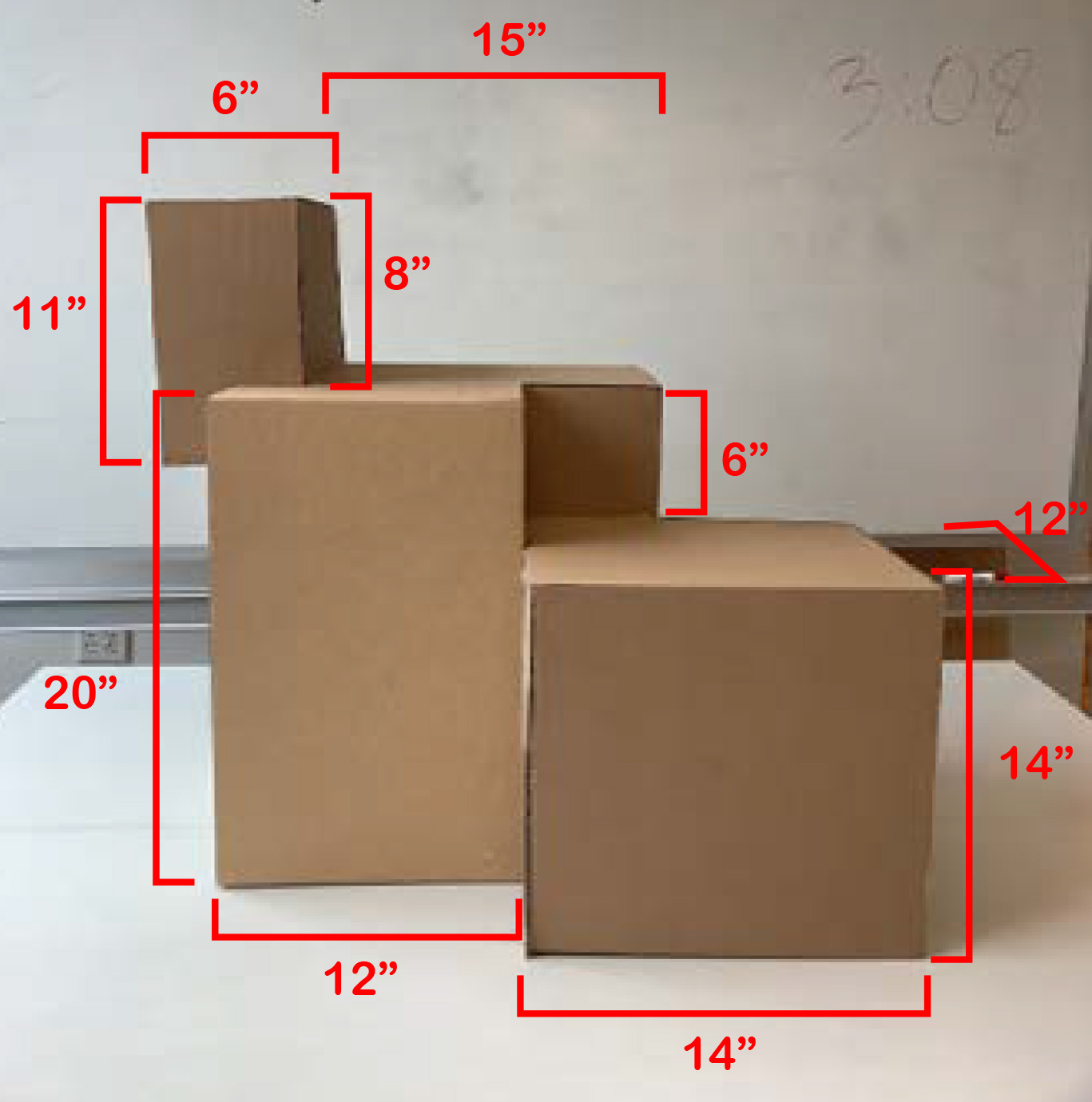
Above: The Measure of Man and Woman: Human Factors in Design by Alvin R. Tilley & Henry Dreyfuss Associates
Left: User testing of varying seat heights with "works-like" model
Right: Lo-fi, scale "looks-like" model with dimensions
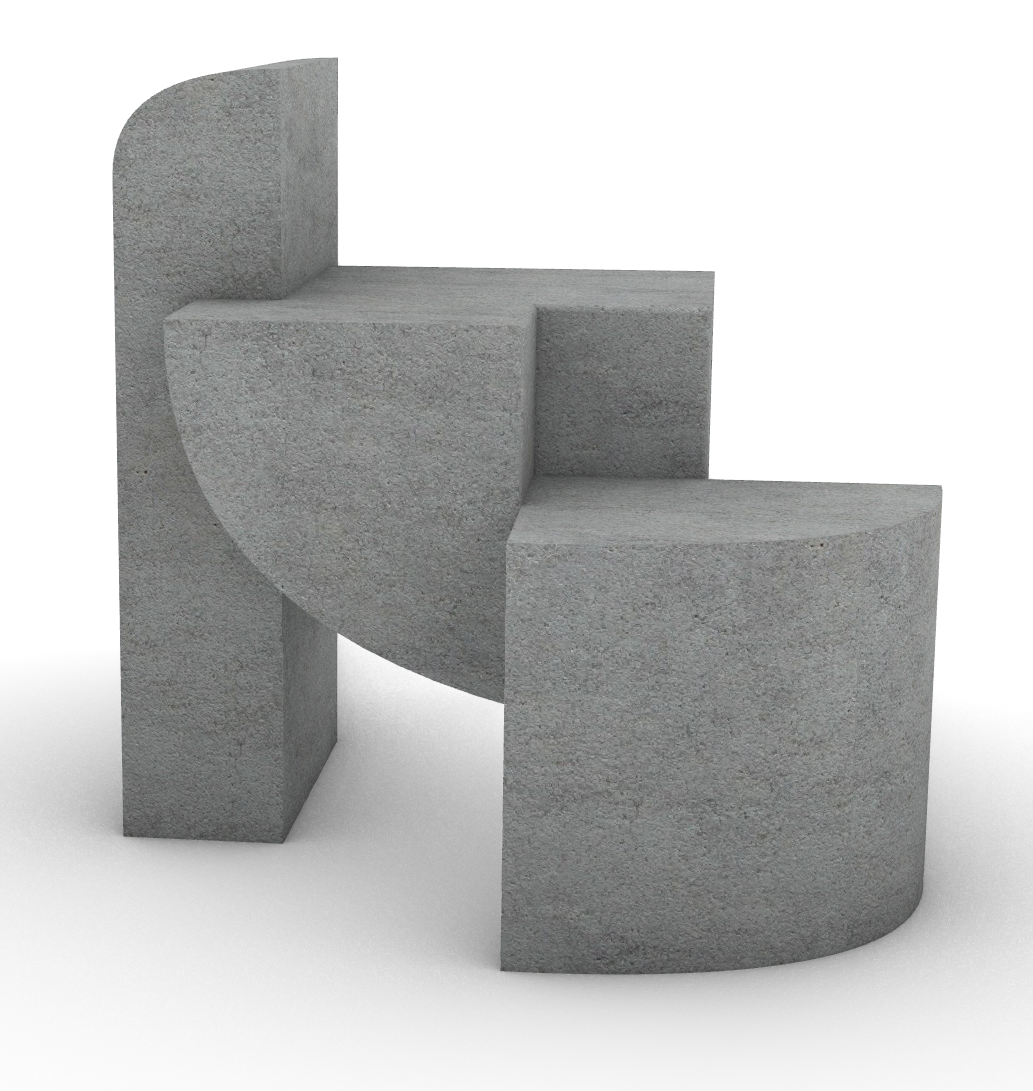
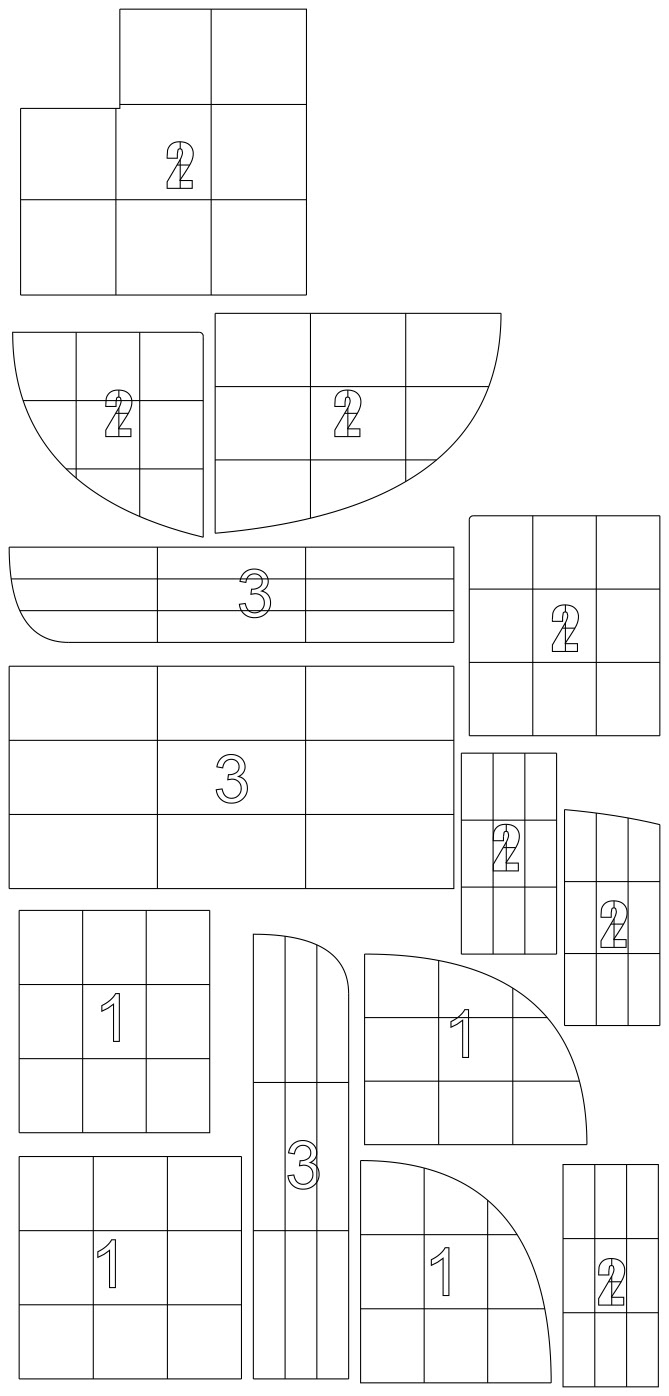
From left to right:
Rendering of revised design with rounded corners.
Template for building sections and tiers.
Birch ply prototype build before endcaps were added.
Sit Spot prototype ready for user testing!
